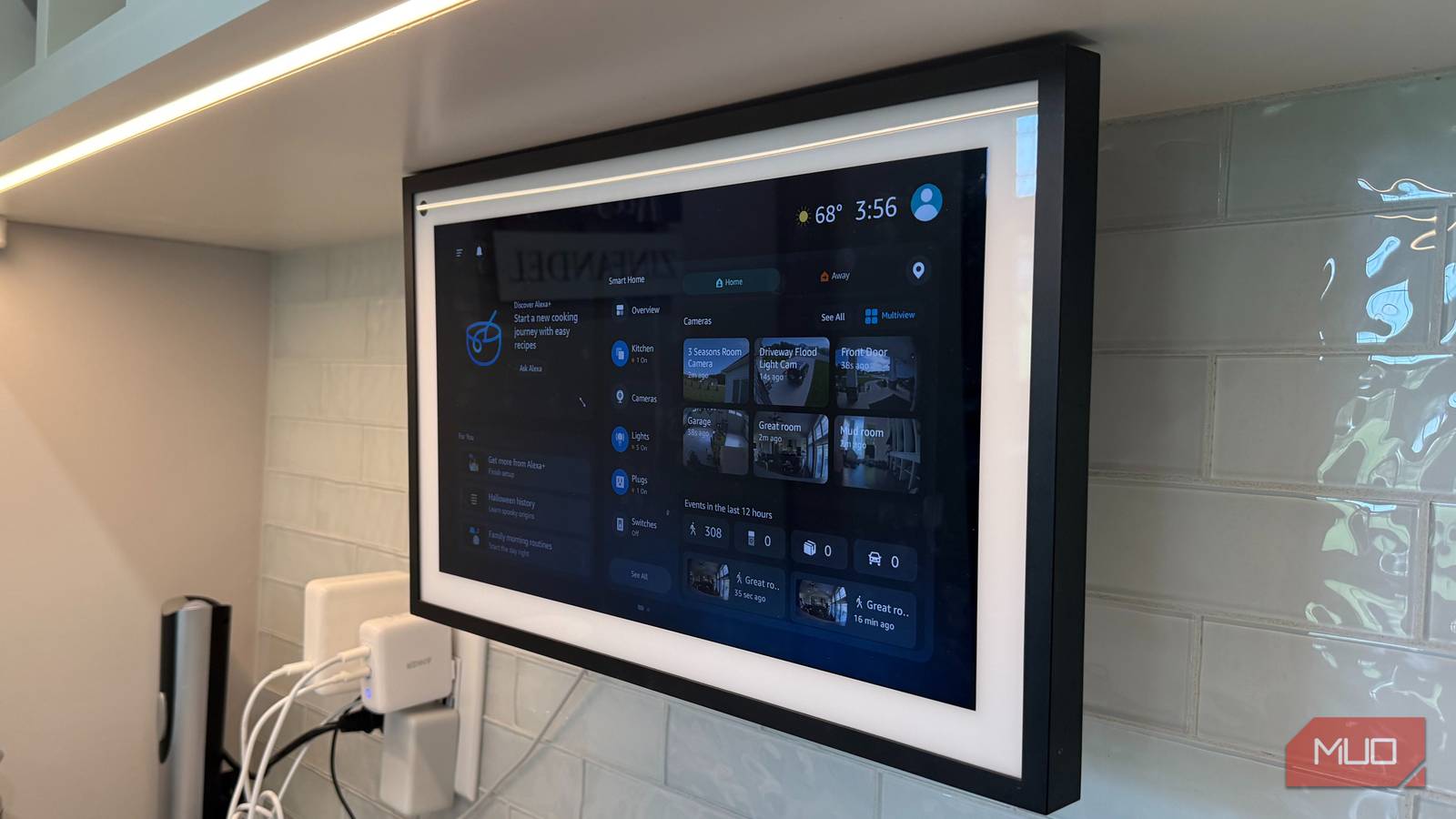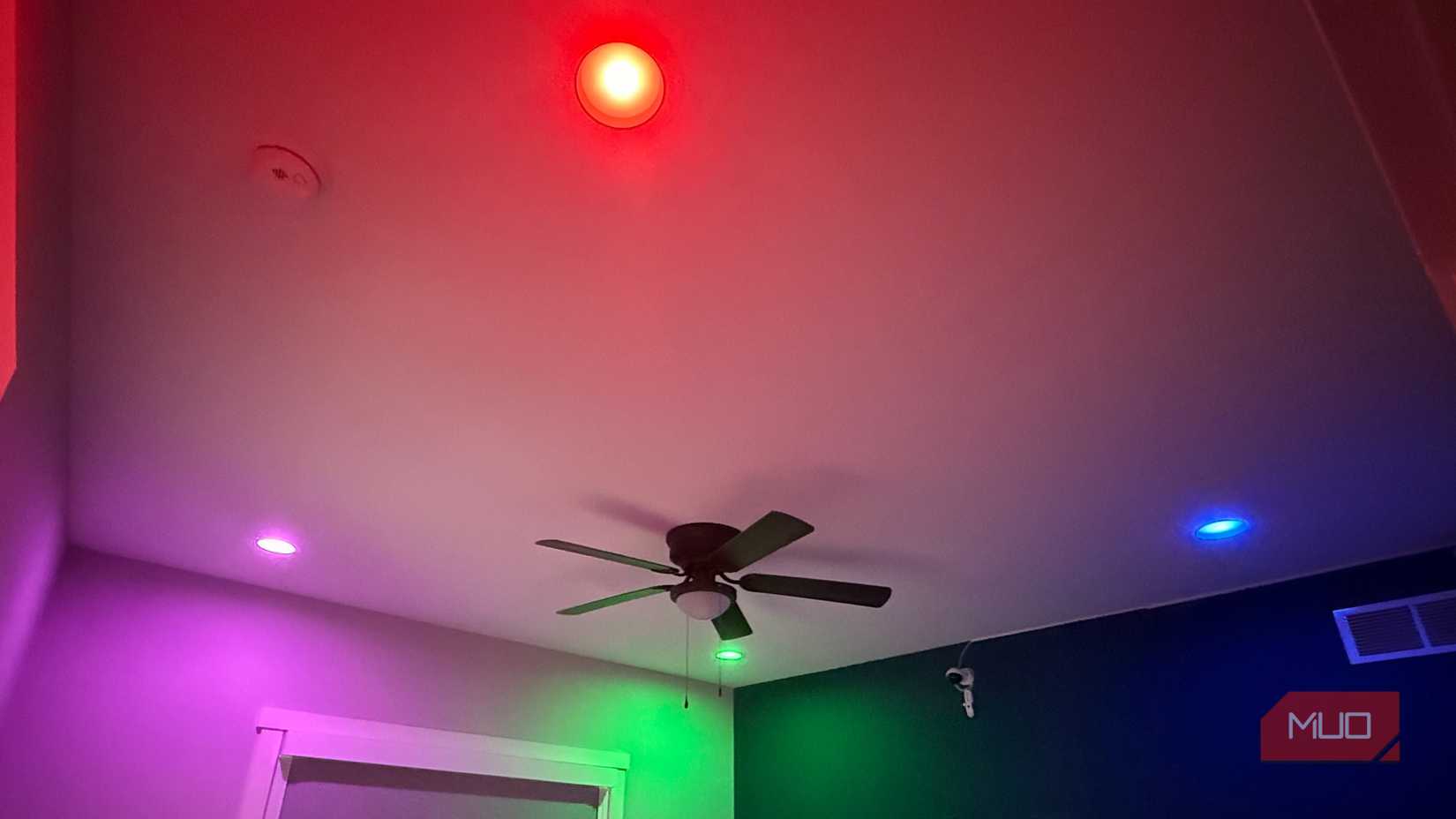People assume smart homes cost a fortune and require some kind of tech wizard to set up. I was in that camp until last year when I picked up an Amazon Echo Dot, some smart bulbs, and a smart plug. They cost me under $100 total. You literally just screw in bulbs and plug things into outlets like you normally would, then spend a few minutes in an app.
Start with an Echo Dot as your smart home hub
Voice control makes everything click
The Echo Dot costs about $50. It plays music, answers questions when you ask, and talks to your other smart stuff through Alexa. The voice commands work well enough that I no longer have to get up to flip switches. I just tell it what you want, and it happens.
Download the Alexa app, plug the Echo Dot into an outlet, and connect it to Wi-Fi—took me less time than making breakfast. I keep mine on my kitchen counter, where I check the weather every morning and set timers when I’m cooking with messy hands. The best part is it’ll work with almost any cheap smart home gadget you buy later.
Add smart bulbs for instant ambiance
Inexpensive lighting control that actually impresses
I went with Govee smart bulbs because you get four for $28. You just twist out your old bulbs and twist these in—same as changing any light bulb you’ve ever changed.
Open the Alexa app, and you can program schedules for your lights. My bedroom gradually gets brighter, starting at 6:30 AM instead of hitting me with full brightness right away. Around sunset, they automatically dim. When I’m watching movies, I tell Alexa to dim the lights to 20%. When I have friends coming over, I’ll make the living room blue, red, or whatever matches the mood.
I know color-changing lights sound ridiculous. But putting my living room in deep blue completely transforms the space. And I haven’t walked into a dark house in months because everything’s scheduled to turn on before I get home. At seven bucks a bulb, this beats paying thousands for a professional system.
Smart plugs are the most versatile addition
Turn any device into a smart device
I’d argue smart plugs are the best value in home automation. Amazon’s version costs $25 and turns a regular outlet into something you can control with your phone or voice.
Stick a lamp in there, and now you’re controlling it with your voice. Fans, coffee makers, space heaters, whatever you want. My bedroom fan plugs into another smart plug. It turns on when I go to bed and off when I get up. It took me a minute to find the scheduling settings in the app, but once I did, they were pretty straightforward.
That lamp from your grandparents still works fine, right? The same goes for your summer box fan and your patio string lights. A $25 plug makes all of them voice-controlled. You’re not replacing things that already work fine; you’re just making them smarter.
Level up with a smart thermostat
Energy savings that pay for themselves
The Amazon Smart Thermostat is another option to make your home “smart,” but it will set you back about $80. I mostly use my phone to drop the temperature an hour before I leave work. Walking into a cool house in the middle of summer beats coming home to a sauna. You can also schedule different temps throughout the day or just tell Alexa to adjust it. I use an Echo Hub to show my smart thermostats—if you’re using an Echo Dot, you can just ask Alexa what the temperature is.
My electric bill went down after installing this thing. But honestly, the bigger win is that temperature just isn’t something I think about anymore. On hot summer days, the house is already comfortable by the time I walk through the door. With cold winter mornings, I don’t drag myself out of a warm bed to adjust the thermostat.
Just make sure yours will work with your HVAC system before you buy it. After running for a week or so, the thermostat figured out my patterns. Now it’ll suggest energy-saving settings without making me feel uncomfortable. If I’m out of town, I’ll check the app so I don’t pay to heat or cool an empty house.
Consider smart features in your next appliance purchase
If you’re replacing an appliance anyway, the smart versions usually don’t cost much more—worth checking. I’ve got a Whirlpool oven, dryer, and clothes washer that all connect to apps. They work with Alexa and Google Home, too.
I get a notification on my phone when the wash cycle finishes. At the grocery store, I can open the app and see if the dryer’s done. On my drive home from work, I’ll turn on the oven so it’s preheated by the time I walk in. This all runs on your existing Wi-Fi and works with the Alexa you already set up.
Don’t go replacing appliances just to get smart features. But when your current ones die, and you need new ones, the smart versions make sense. There’s barely any price difference.
For bigger projects, you might look into smart switches instead of smart bulbs if you want everything controlled from the wall. Smart doorbells and garage door openers like myQ are also cheap additions, though I’d wait on those until you know what you actually use.
You don’t need to break the bank for a smart home
An Echo Dot, some smart bulbs, and a smart plug will run you less than $100. They all connect through the Alexa app, and after living with them for a bit, you’ll know what other stuff would actually improve your life versus what’s just flashy tech you don’t really need.
Maybe you can add a thermostat. Maybe you should go for smart appliances next time yours break. Or maybe you’re happy with what you’ve got. The foundation’s there either way. Buy things that fix actual annoyances in your daily routine, not just because they’re new and shiny. You may just end up spending your free time creating Alexa automations for your home.







